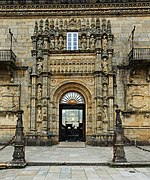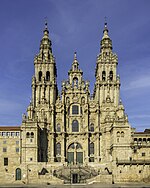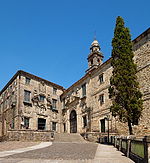University of Santiago de Compostela

The University of Santiago de Compostela - USC (Galician: Universidade de Santiago de Compostela - USC, Spanish: Universidad de Santiago de Compostela - USC) is a public university located in the city of Santiago de Compostela, Galicia, Spain. A second campus is located in Lugo, Galicia. It is one of the world's oldest universities in continuous operation. The university traces its roots back to 1495, when a school was opened in Santiago. In 1504, Pope Julius II approved the foundation of a university in Santiago but "the bull for its creation was not granted by Clement VII until 1526". In 1555 the institute began to separate itself from strictly religious instruction with the help of Cardinal Juan Álvarez de Toledo and started to work towards developing other academic fields, including the emerging science fields. Today the university's facilities cover more than 130 hectares (320 acres). In terms of human resources, the university has more than 2,000 teachers involved in study and research, over 42,000 students, and more than 1,000 people working in administration and services. Moreover, in 2009, the university received the accreditation of Campus of International Excellence by the Ministry of Education, recognising USC as one of the most prestigious universities in Spain. The university ranks 5th in Spain's best universities ranking by Complutense University of Madrid and IAIF and 4th amongst public universities.
Excerpt from the Wikipedia article University of Santiago de Compostela (License: CC BY-SA 3.0, Authors, Images).University of Santiago de Compostela
Avenida do Burgo das Nacións, Santiago de Compostela Vista Alegre
Geographical coordinates (GPS) Address Nearby Places Show on map
Geographical coordinates (GPS)
| Latitude | Longitude |
|---|---|
| N 42.8885225 ° | E -8.5449726 ° |
Address
Avenida do Burgo das Nacións
15705 Santiago de Compostela, Vista Alegre
Galicia, Spain
Open on Google Maps










